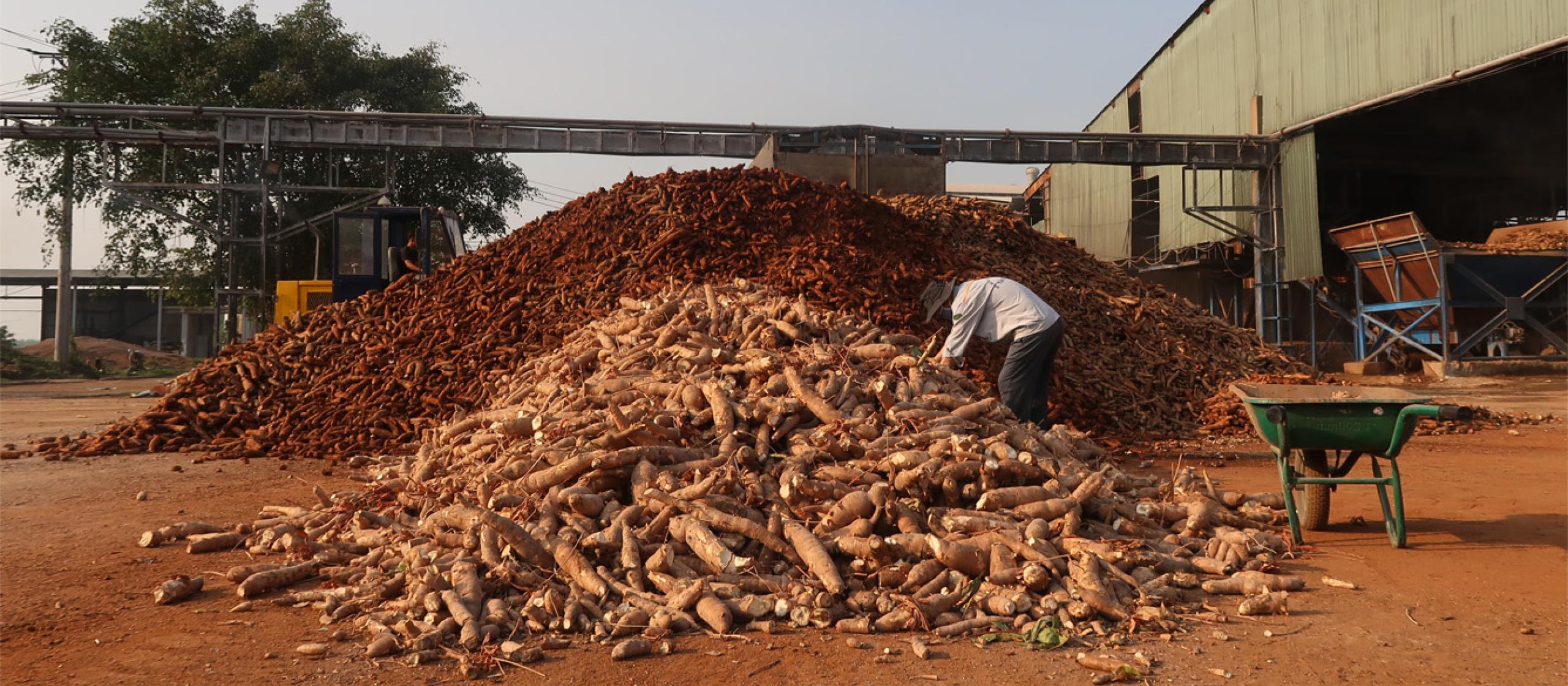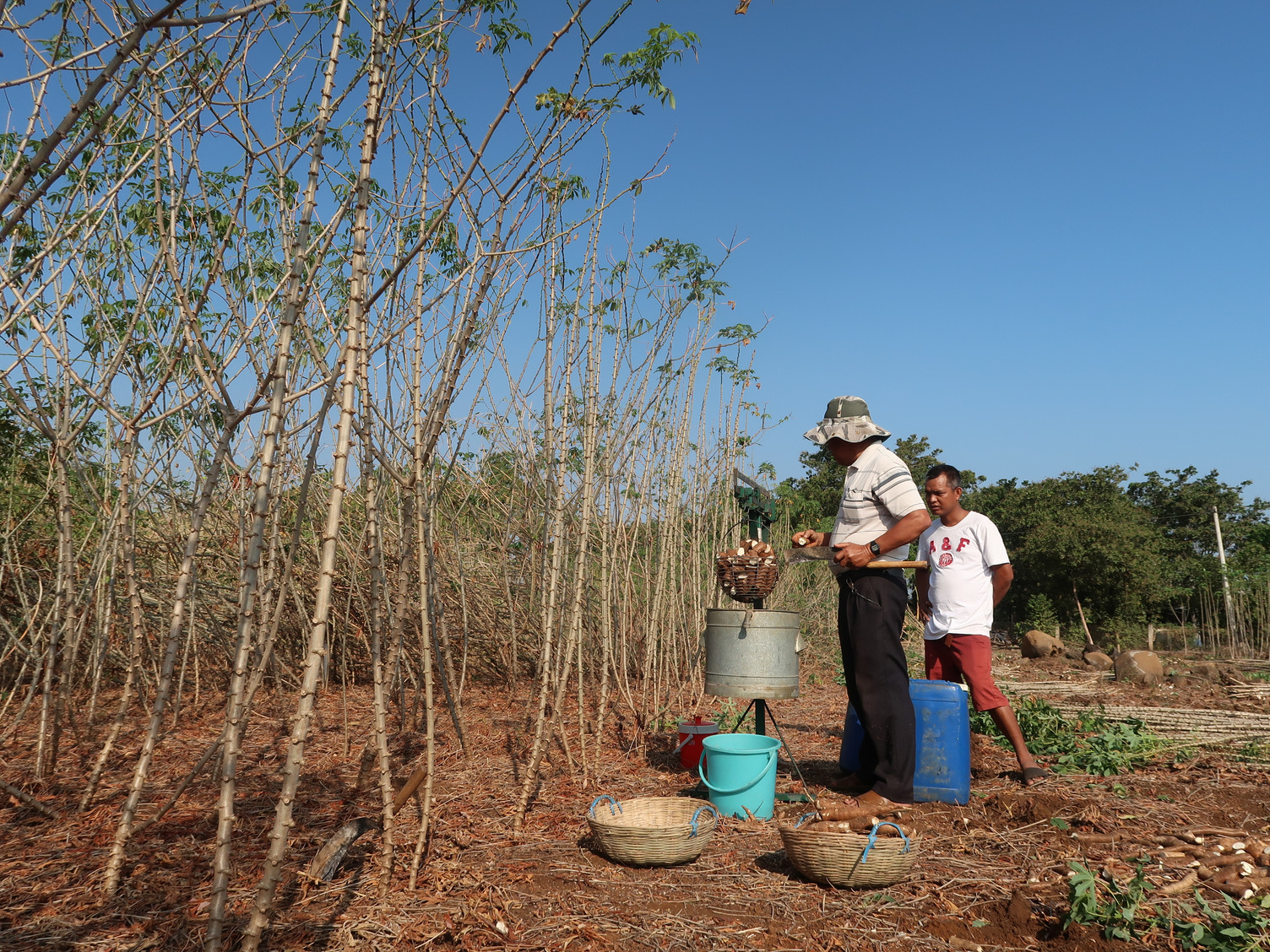- HomeHome
-
About ACIAR
- Our work
- Our people
-
Corporate information
- ACIAR Audit Committee
- Commission for International Agricultural Research
- Policy Advisory Council
- Agency reviews
- Executive remuneration disclosure
- Freedom of information (FOI)
- Gifts and benefits register
- Information publication scheme
- List of new agency files
- Contracts
- Legal services expenditure
- Privacy impact assessment register
- Commonwealth Child Safe Framework
- Benefits to Australia
- Careers
- 40 years of ACIAR
-
What we do
- Programs
- Cross-cutting areas
- Resources
- Where we work
-
Funding
- Research projects
- Fellowships
-
Scholarships
- John Allwright FellowshipScholarships to study in Australia for ACIAR partner country scientists to have Australian postgraduate qualifications
- ACIAR Pacific Agriculture Scholarships and Support and Climate Resilience Program
- Alumni Research Support Facility
- Publications
- News and Outreach
Date released
24 June 2021
Cassava is among the most widely grown smallholder crops in mainland South-East Asia. In Vietnam, the cassava export value in 2020 was close to one billion dollars, making cassava one of the country’s top three agricultural export products.
The lucrative plant has become essential to rural livelihoods, but its viability is under growing threat from Cassava Mosaic Disease (CMD), a destructive plant virus causing up to 80% losses in productivity.
‘In 2016, our farmers faced the CMD for the first time, and they were shocked. The disease bluntly chopped one-third of the average productivity,’ said Bui Cong Ngoc, an experienced cassava trader in Tay Ninh.
Tay Ninh in the southern province of Vietnam is the busiest cassava trading hub in the region. As the global demand for cassava continues to grow every year, local traders must extend their search for supply, often stretching hundreds of kilometres and across the national borders of Cambodia and Laos in search for fresh roots and chips.
It’s these interconnected trading network cutting across national borders that has underpinned the rapid spread of CMD; now threatening the livelihoods of nearly two million households in the region.
‘Back in 2016, there was neither CMD-resistant cassava nor research data on the disease in Vietnam,’ recollects Ms Pham Thi Nhan, Acting Director of Hung Loc Agriculture Research Centre based in southern Vietnam. ‘Therefore, the disease outbreak made not only farmers, but also local and central governors highly concerned and confused.’
Nhan has studied cassava for many years and is the creator of several popular, high-yield cassava varieties in Vietnam. She and other prominent Vietnamese and international researchers have joined an ACIAR-supported project led by the Centre for Tropical Agriculture (CIAT) since 2019 to find out CMD-resistant, commercially competitive, and acceptable cassava varieties.
Since the early stages of the project, research partners have received a range of disease-resistant cassava varieties developed for African strains of the virus by the International Institute of Tropical Agriculture (IITA) to see how these will perform in Asia.
In Vietnam, the project harvested the second trial clones across several southern provinces in March 2021.
‘The IITA-developed varieties performed excellent resistance to CMD in Vietnam,’ said the project’s leader Dr Jonathan Newby from CIAT.
‘More importantly, the yields of the new clones that we are evaluating were significantly higher than the current main varieties in Vietnam when impacted by CMD, particularly where the disease pressure was high. The most popular varieties in Vietnam, such as KM94, KM419, HL-S11, and KM 140, were also the most seriously infected,’ Dr Newby added.
As Vietnam’s agriculture policymakers, local authorities and researchers have prioritised the mission to find CMD-resistant cassava varieties, the trial result has brought lots of hopes for the country’s cassava industry.
‘The most important benefit for Vietnam when we participate in this regional research is the access to disease-resistant varieties. After two or three more clone trials, the most resistant and market-competitive varieties can be used for broad production. In the long term, we can even create a hybrid of the efficient introduced gene source with the native breeds to select the most appropriate varieties for Vietnam,’ Nhan said.
‘Our Vietnamese research partners from Hung Loc Centre and Agriculture Genetics Institute have been very proactive in screening germplasm for CMD resistance and agronomic performance,’ said Mr Howard Hall, ACIAR Agribusiness Research Program Manager.
As a result, Vietnam is likely to have new CMD-resistant varieties released within two years, while the average time to develop such varieties is from six to eight years.
‘Moreover, the results are also of value to all cassava-producing countries in the region who can now receive a much smaller set of clones for multilocation evaluation,’ Mr Hall added.
After the second trial, based on the main selection criteria for Vietnam, the project team has selected ten clones from the CIATs breeding program in Colombia for the third trial and a rapid multiplication system. The project will also continue to evaluate their agronomic performance, with the evaluations expanding to other production zones of Vietnam.
‘As we move on with the research to develop a sustainable cassava system and value chains, it is promising to have some good clones that have both resistance to CMD and agronomic performance. However, because the starch content determines prices that farmers receive in Vietnam, the starch content must be close to the benchmark of 30% for new varieties to be competitive in the market segments in mainland South-East Asia,’ Dr Newby explained.
At the same time, the project is also developing rapid multiplication systems in key locations in Vietnam with the engagement of some government institutions and businesses. This engagement is critical to delivering the project’s best results to farmers as quickly as possible.
Mr Ngoc, the trader in Tay Ninh, shared that the Tay Ninh industry still imports big loads of cassava from deeper into Cambodia at increasing costs to meet feedstock shortfalls. Increasing the domestic supply is critical to ensure processing efficiency and competitiveness in the global market. He is keen on joining the project with researchers because he knows the new cassava varieties are science-backed.
The project, Establishing sustainable solutions to cassava diseases in mainland Southeast Asia, runs from 2019 to 2023 and is funded through the ACIAR Agribusiness Research Program.







